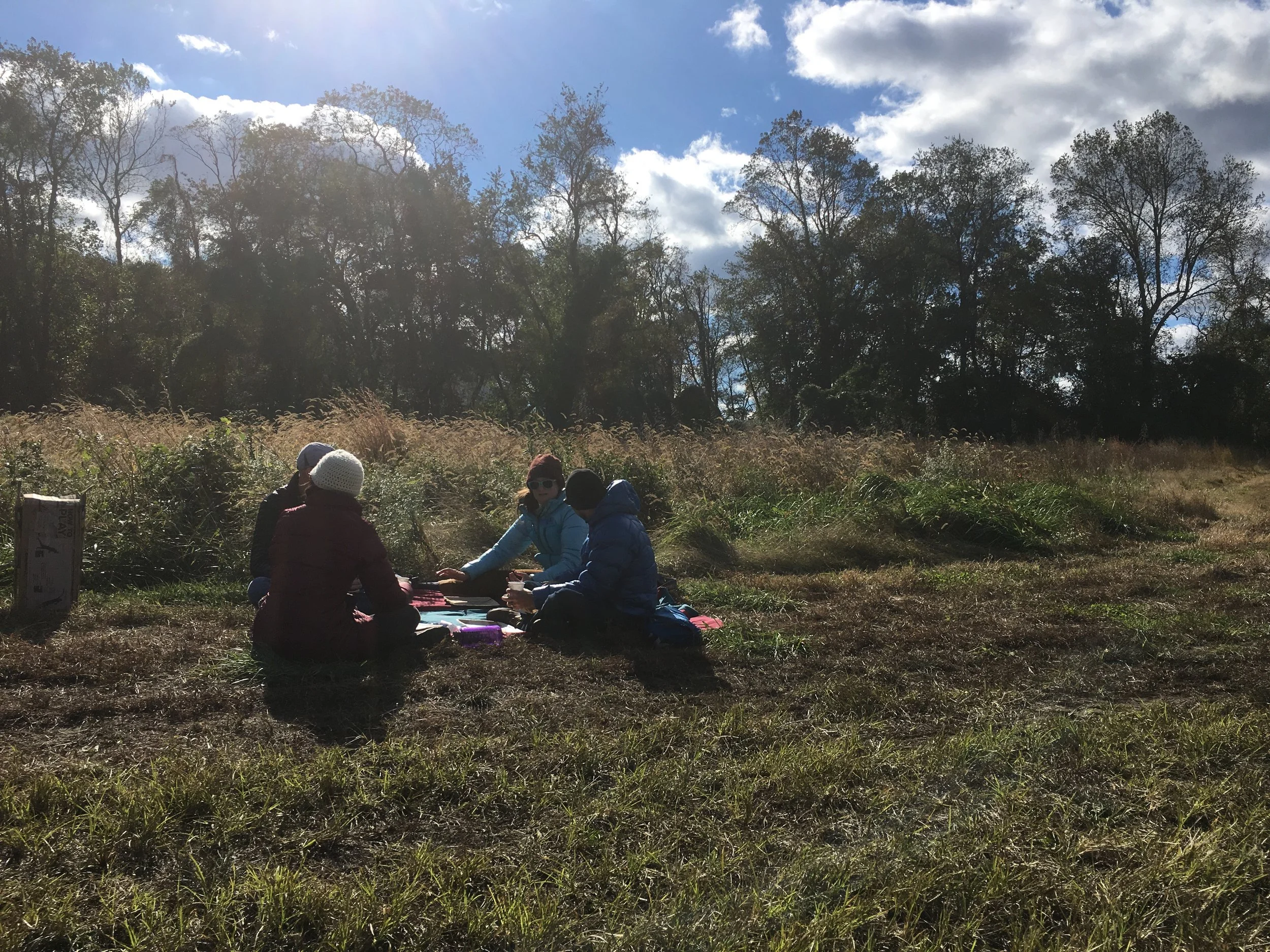by Market CSA member Denise Graveline
Today, I not only grabbed good stuff at the Owl's Nest Farm stand at Petworth Community Market, I also picked up a shipment of seafood from a buying club I belong to. It lets you buy quantities of salmon, spot prawns, and more, flash-frozen right off the boat and shipped in a group shipment. So that prompted an early morning cleanup of the freezer to be sure I had enough room for everything, from veg to fish. Supermarkets will be seeing a lot less of me this season.
But I made sure there's some room in the freezer for a secret weapon: A strawberry puree to be used for making ice cream. I got five pints this morning, and after they soaked in water and vinegar, I trimmed the tops. I'm going to roast them, tossed with balsamic vinegar and a little sugar, then puree them and store at least a couple of pints of this mix packed flat in plastic zip-top bags. I just need one pint at a time to make this balsamic strawberry-rosemary ice cream, so freezing some of the puree means I can have this treat all summer long. I picked up fresh rosemary this week for the same purpose, although the rosemary gets infused in the cream-egg base of the ice cream. I'll save some strawberries to eat just as they are, and hope there's one more week for me to grab another stash. These strawberries are small and flavorful, sweet and firm. Perfect for all sorts of cooked and raw dishes.
I also got more of the sprouted broccoli--can't stop eating it--and the kohlrabi. I'm going to try the kohlrabi-carrot slaw that the farm recommended this week, and I'm going to saute the kohlrabi greens and bok choi greens together with some garlic, onion, and broth, to serve as a base for some scallops with sorrel sauce, made a couple of weeks ago. Spring is the season of green everything, strawberries excepted, so I'm also going to make the Silver Palate Green Sauce described here with some of my farm herb finds; it's easy to adjust this sauce to make it vegan. And this article from The Splendid Table about using scraps and ends shares some great recipes from the new book Scraps, Wilt & Weeds: Turning Wasted Food into Plenty; now that the farm is offering head lettuce, you can try the recipe for seared lettuce bottoms, and there's a thyme oil--one that uses stems and all--that I have my eye on.







